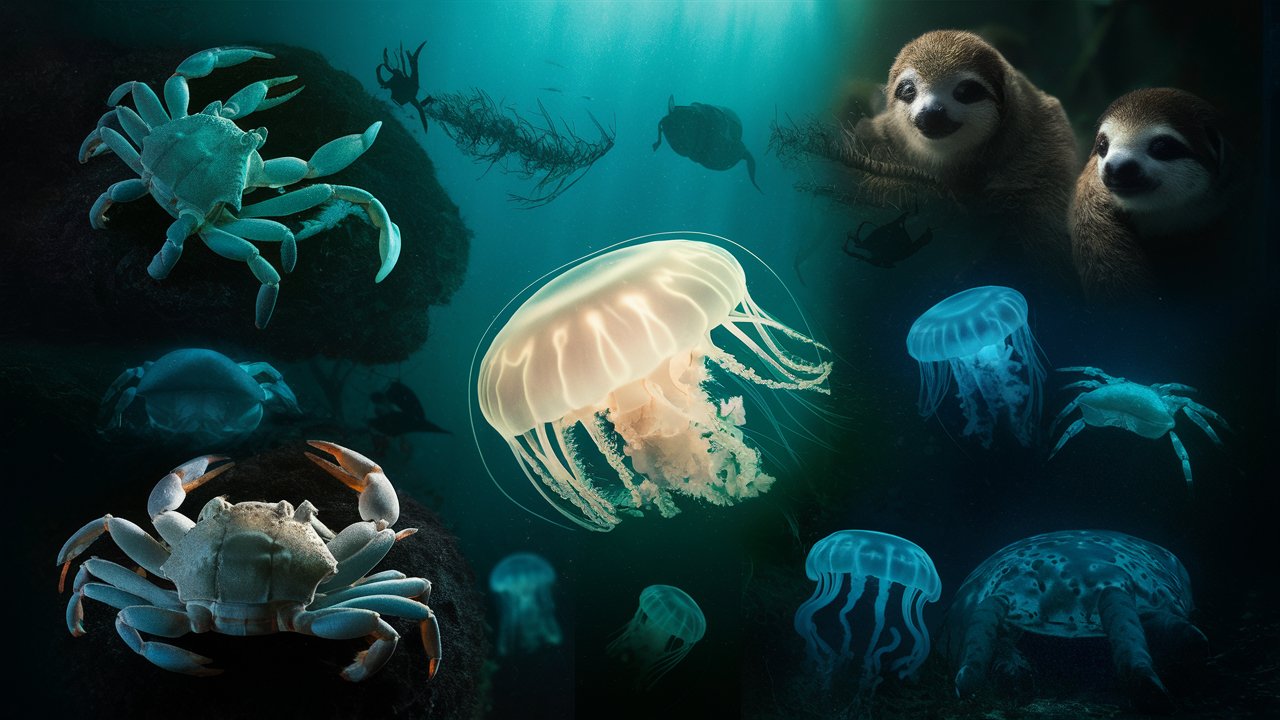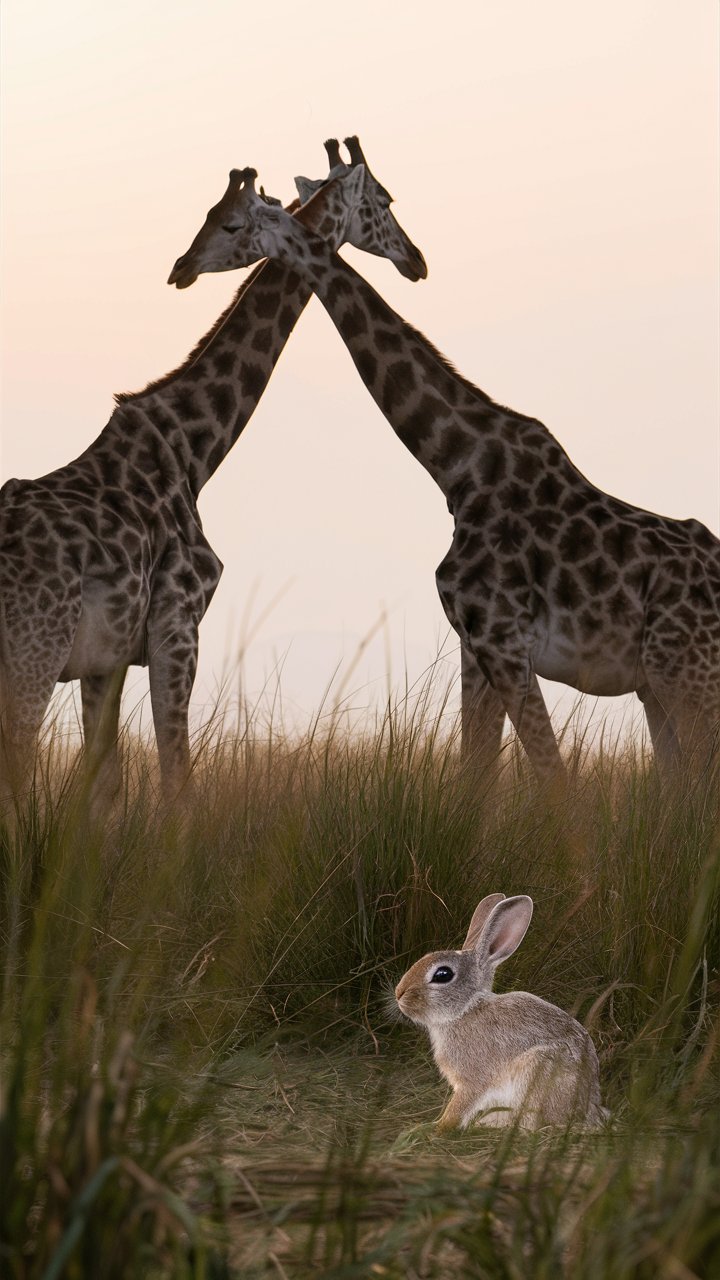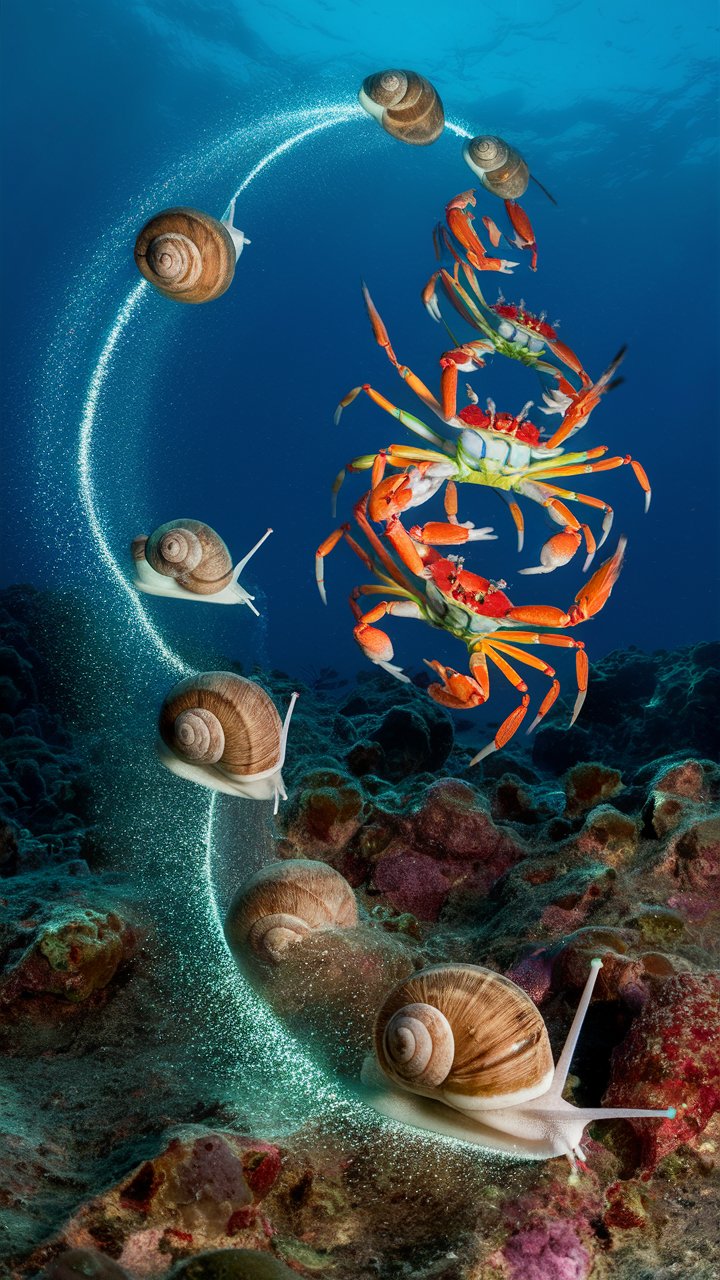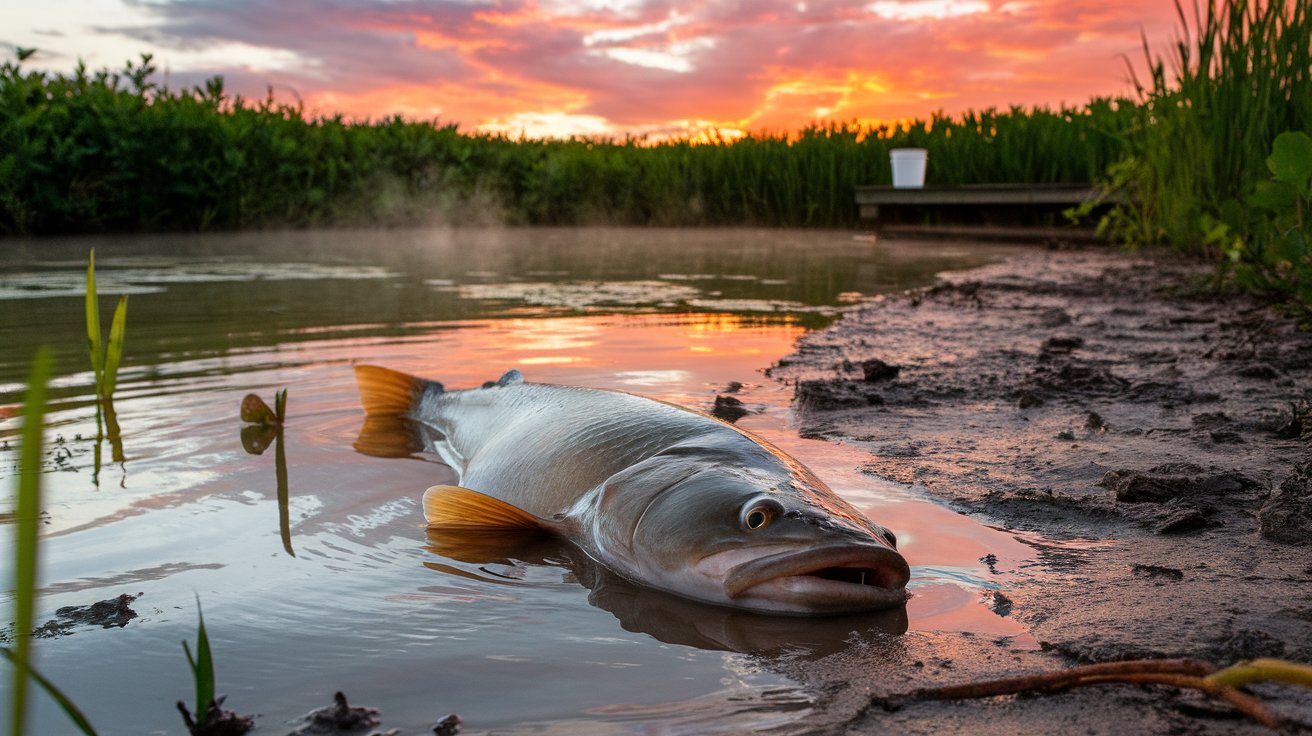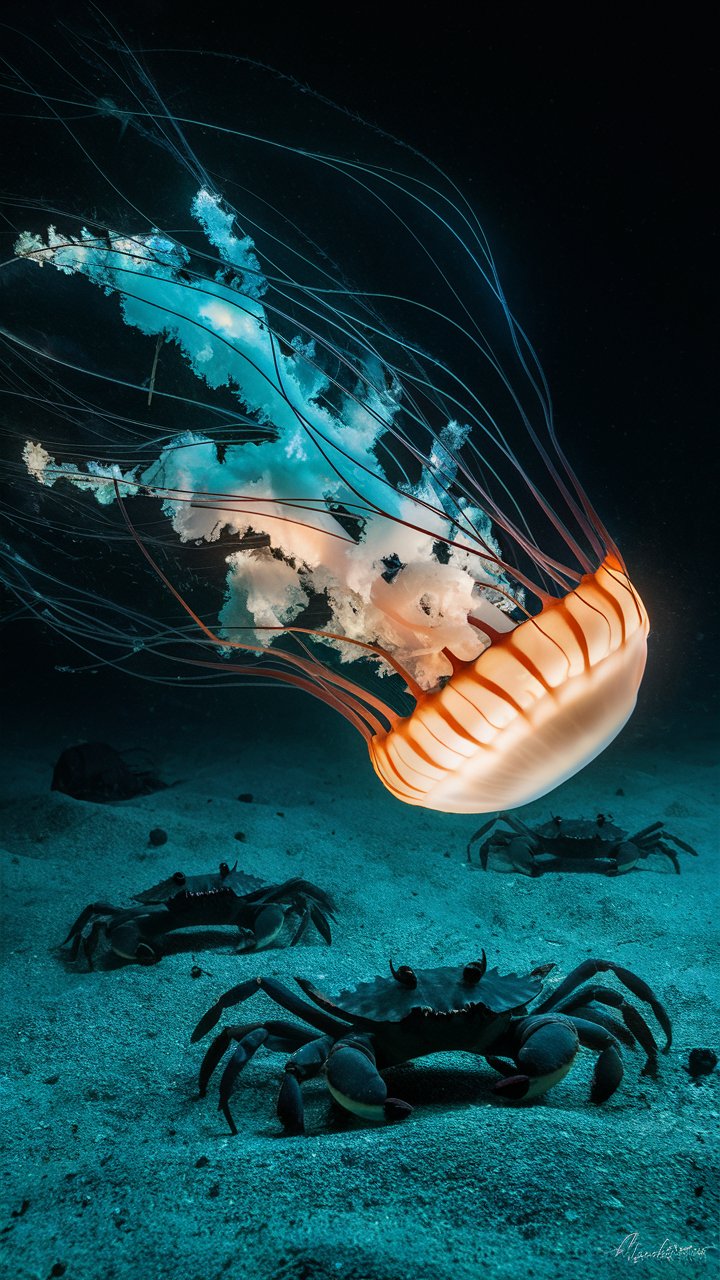Introduction
In the complex ecosystem of our planet, some creatures thrive in near silence, making their presence known not through sounds but through subtler forms of existence. The jellyfish are silent yet mastered the art of silence, communicating through bioluminescent signals in the marine biology of the deep oceans. Similarly, sloths, known for their quiet nature, embody calmness, sleeping with their eyes open and moving at a steady pace and quiet nature that hardly disturbs the world around them. These quiet animals, which possess vocal cords but choose not to make sounds, represent a silent wonders of evolution, capable of non-verbal cues that speak volumes about the art of silence.
Such silent hunters stalk their prey without noise, using non-verbal cues and subtle body language. Marine creatures, often found in oceans where survival depends on stealth, lack eyelids yet navigate complex environments silently. The animal kingdom’s quietest animals, from the quiet animal that roams the forest floor to those that glide silently through the water, showcase an incredible diversity of life that has mastered the art of silence in a world that’s overwhelmingly loud.
Key Takeaways
- Giraffes and rabbits exemplify the quietest animals in the natural world, utilizing non-verbal cues and subtle body language to navigate and communicate without drawing predator attention.
- Marine creatures like jellyfish use bioluminescent signals for communication, highlighting the art of silence in the ocean’s noisy environment.
- Crabs and snails demonstrate that silence does not preclude expression; they engage in vivid color displays and chemical signaling to interact in their respective habitats.
- Sloths and turtles thrive by minimizing energy expenditure, using their silent nature to blend into their environments, proving that being less vocal can be a significant survival advantage.
- The ghost crabs‘ ability to blend into sandy environments and communicate through vibrations exemplifies how effective silent and camouflage tactics are for survival.
- The study of these creatures enriches our understanding of the diverse strategies in the animal kingdom, where silence is not just a lack of noise, but a dynamic form of life.
Exploring the Tranquil World: The Quietest Animals in the World
In the vast tapestry of the natural world, certain creatures like giraffes and rabbits are one of the quietest animals, known for their subtle body language and lack of vocal cords. These silent animals have mastered the art of non-verbal communication, using visual and scent cues to interact. Their ability to navigate their environments without drawing the attention of predators showcases a unique survival strategy emphasizing stealth and tranquility, making them one of the most calm creatures on earth. This quiet nature also helps them be kept as pets, highlighting how animals use silence effectively.
Giraffes: Giants of Silence
Giraffes are famous for their tall stature and elongated necks but are equally remarkable for their silent nature. Lacking vocal cords, they communicate primarily through visual signals and gentle touches. This allows them to maintain a serene presence in the savannah, where silence can be a strategic advantage against predators. Observing these gentle giants in their natural habitat offers a unique glimpse into how size and silence coexist gracefully in the animal kingdom.
Rabbits: Quiet Communicators of the Wild
Rabbits, often seen but seldom heard, are one of the most surprisingly quiet creatures. They rely heavily on scent marking and subtle body movements to communicate. This ability to remain quiet helps them evade predators and communicate within their groups without drawing unnecessary attention. Their silent nature makes them fascinating subjects for studying non-verbal animal communication.
Silence in Motion: How Silent Creatures Communicate Without Sound
Many animals, especially those found in diverse habitats like oceans and rainforests, have evolved to communicate in ways that don’t involve vocalization. Creatures such as snails and crabs use a myriad of silent methods, from chemical signals to changes in coloration. This silent form of communication is crucial for coordinating social behaviors and avoiding predators, proving that one can be both silent and expressive in the animal kingdom.
List of Silent Creatures and Their Unique Communication Methods
Crabs: Although they lack vocal cords, crabs use a form of communication known as stridulation, where they rub their claws against their legs to create sound signals, helping them convey messages effectively without typical vocalizations.
Snails: Relying primarily on chemical cues and touch due to their absence of vocal cords, snails utilize chemoreception to detect environmental chemicals and tactile sensing through their feet, enabling them to interact and navigate their surroundings silently.
Turtles: Despite having the capability to produce some sounds like hissing or grunting through their lungs, turtles primarily use non-verbal cues such as biting and blinking for communication, emphasizing silent interactions within their species.
Jellyfish: Entirely silent, jellyfish may use bioluminescent displays as a form of communication, lighting up to interact with each other or attract prey, showcasing a unique method of silent communication in the marine world.
Spiders: Masters of silence, spiders communicate through vibrations on their webs instead of vocal sounds. These vibrations serve as a way to send signals to potential mates or alert them to the presence of threats, demonstrating intricate non-verbal communication skills.
These examples highlight how various creatures have adapted to their environments by developing unique, silent forms of communication, enabling them to survive and thrive without making a sound. This silent but expressive behavior illustrates the incredible adaptability and diversity of communication methods in the animal kingdom.
Crabs: Colorful Communicators
Crabs might lack the ability to produce sounds, but they compensate with vibrant displays of color and physical gestures. These silent ones communicate their intentions and emotions through changes in coloration and claw waving, essential for their survival and reproduction. Their communication style highlights the diversity of silent languages in the natural world.
Snails: Slow and Silent Signalers
Snails exemplify the art of silent communication through chemical cues and touch. Their slow movements are complemented by a rich palette of sensory interactions that don’t involve sound. This method of communication is crucial for mating and navigating their environment, proving that slow and steady can indeed win the race in nature’s silent realms.
Masters of Silence: Jellyfish and Other Noiseless Marine Creatures
Jellyfish, along with other marine creatures like ghost crabs, epitomize silence in the marine world. Lacking vocal cords and often eyelids, these captivating creatures rely on bioluminescent displays and subtle movements to interact and hunt. Their ability to be virtually silent not only aids in predation but also in evasion, allowing them to thrive in the ocean’s vast and often noisy ecosystem.
Jellyfish: Bioluminescent Beacons of the Deep
Jellyfish communicate and lure their prey using bioluminescent light, a fascinating form of silent communication. This glowing ability allows them to create stunning displays that serve both as a defense mechanism and a way to attract mates. Studying these creatures illuminates the silent but vivid language of light used under the sea.
Ghost Crabs: Masters of Camouflage and Silence
Ghost crabs are adept at silent survival, using their ability to blend into their sandy environments as their primary defense. They communicate through body postures and vibrations in the sand, a form of silent dialogue that is perfectly suited to their coastal habitats. These adaptations make ghost crabs intriguing examples of how silence and camouflage go hand in hand.
“Like a bioluminescent jellyfish, let your inner light shine even in the darkest moments. Jellyfish teach us that survival is an art form painted in calm strokes, reminding us that there’s wisdom in the silence of a jellyfish; listen closely to the unspoken” – (Wolf Global) (thatonerule.com).
The Art of Quietude: How Nature’s Most Calm Animals Thrive
Sloths and turtles exemplify the calm nature that many quiet creatures possess. Their steady pace and silent demeanor allow them to go largely unnoticed in their natural habitats, conserving energy and minimizing risk. This quietude is an evolutionary advantage that helps them live longer and avoid the dangers that more vocal animals might face. Their existence challenges our understanding of survival, showing that sometimes, silence is not just golden; it’s crucial.
Sloths: The Silent Sentinels
Sloths take the art of quiet to an extreme, spending most of their lives in slow motion, high in the treetops. Their limited movement and almost nonexistent vocal activity make them masters of energy conservation. This lifestyle is not just about being slow; it’s about being efficiently silent, making them a model of survival through stillness.
Turtles: The Silent Wanderers
Turtles are another example of silent efficiency. Their hard shells provide physical protection, while their silent nature shields them from many threats. Turtles rarely make noise, relying instead on a slow, measured pace and an innate ability to navigate silently through both land and water. This quiet approach to life helps them live long and prosper in a variety of habitats.
[lasso rel=”amazon-31″ id=”5449″]
Conclusion
In a world that often celebrates noise, the quiet animals in the animal kingdom serve as a profound reminder of the power of silence. These creatures on earth, from jellyfish that communicate primarily through bioluminescent signals to sloths whose steady pace and quiet nature embody a serene existence, highlight the diverse strategies of survival. Their ability to remember things for at least three months and their silent interactions are essential for their longevity and success in their habitats. The observation of these quiet beings not only fascinates but also teaches valuable lessons about the adaptability and complexity of life.
These quietest animals demonstrate that silence can be a dynamic and effective form of communication within the natural world. Whether through fluffy rabbits that communicate primarily through scent cues or ghost crabs using vibrations to interact, these animals prove that you don’t need to make noise to be heard. Their life strategies, refined through evolution, allow them to thrive despite their lack of traditional vocalizations, ensuring their survival in both predator-rich environments and peaceful habitats. This subtle mastery of living quietly underlines the intricate balance and beauty of our planet’s ecosystems.

